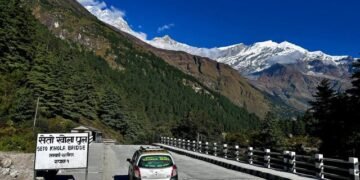Awaza (Turkmenistan), Aug 5: Prime Minister KP Sharma Oli has said geography must no longer determine destiny. “With strengthened partnerships, smart investments and unwavering collective will, we can overcome limitations of ‘landlockedness’ and ensure economic prosperity to our people,” PM Oli added. PM Oli said it while addressing the UN Conference on Landlocked Developing Countries (LLDCs) here on Tuesday.
He informed that Nepal firmly believes the regional solidarity and global cooperation are vital to bridging the development divide. “We are confident that, with the continued support of our neighbours, India and China, and the broader international community, we can transform the barriers of ‘landlockedness’ into gateways of opportunity,” PM Oli underscored.
As a committed member of the LLDC family, Nepal stands ready to work with all of you, not only as a beneficiary of change, but also as a partner in shaping it, PM Oli said, addressing the event.
Togetherness for driving progress
He called for togetherness to driving progress for a future interlocked by connectivity, powered by innovation and defined by resilience, inclusion and shared prosperity.
PM Oli, however, said the LLDCs continue to face persistent structural barriers: geographical isolation, dependency on transit countries, inadequate transport networks and limited integration into regional and global markets.
These challenges are even more acute for half of the LLDCs that are also LDCs. Their very geography of ‘landlockedness’ continues to hinder their development. He reminded that despite two decades of journey from Almaty to Vienna Program of Action, LLDCs still grapple with infrastructure and connectivity deficits, high trade and transit costs, limited diversification and little value addition, heavy reliance on primary commodity exports, low levels of private investment, and growing vulnerability to climate change and disasters. These barriers pose severe impediments to their economic growth and development, the PM argued.
LLDCs need unlocking potential
“LLDCs are not just defined by their inherent geographical constraints. They are also defined by their potential. These countries are rich in untapped natural endowments, offering many investment opportunities. They are home to youthful and innovative populations. They are increasingly engaging in the digital economy,” he PM lauded, underlining the urgency to unlock such potential.
According to him, the Awaza Programme of Action offers a renewed opportunity to address these long-standing bottlenecks and seize new pathways toward inclusive and resilient growth. But we must be clear: ambition without action will not suffice, he exhorted, highlighting the need of stronger Political will, renewed and strengthened global partnership that leaves no country behind, and coordinated actions at all levels.
The Awaza PoA outlines five clear priorities under the theme of “Driving Progress through Partnership”: Structural transformation and STI; trade facilitation and regional integration; transit, transport and connectivity; climate resilience and adaptation; and means of implementation, the PM shared.
“With the right policies, strong solidarity and support, LLDCs can transition: from landlocked to land-linked, from transit-dependent to trade-competitive, and from climate-vulnerable to climate-resilient countries,” PM Oli said.
In his opinion, science, technology and innovation, especially digital technologies, hold immense promises to overcome the physical limitations of LLDCs. This Conference is a call to collective resolve. It is a pathway to equity, inclusion and shared opportunity.
“To turn isolation into integration, and potential into prosperity, we must,” Oli underlined, “Invest in smart, sustainable, and climate-resilient infrastructure; deepen regional and subregional cooperation; harness the opportunities offered by technology to advance and accelerate development; and drive progress through inclusive global partnerships with shared responsibility.”
He sought renewed commitment to convert the Awaza Programme of Action into tangible and measurable progress, for more than 570 million people who live in the LLDCs.
Awaza Programme of Action blueprint for decade
He shared that Nepal welcomed the Awaza Programme of Action as a visionary and actionable blueprint for the decade ahead. Its priorities strongly resonate with Nepal’s national goals, including our national aspiration of a “Prosperous Nepal, Happy Nepali.”
Irrespective of being a landlocked LDC graduating next year, Nepal continues to face high transport costs, limited regional integration, and inadequate infrastructure, according to him.
Our vision is to transform Nepal from a landlocked to a land-linked country.
The Head of the Government also informed about Nepal’s investment priority like expanding highways and railways, cross-border trade routes, digital corridors, and green energy partnerships.
“We are working closely with our neighbours, India and China, to enhance connectivity and integration across multiple domains. We are also committed to aligning our efforts with regional and international initiatives to ensure that LLDC-specific vulnerabilities are addressed in broader development frameworks,” he explained during the address.




















